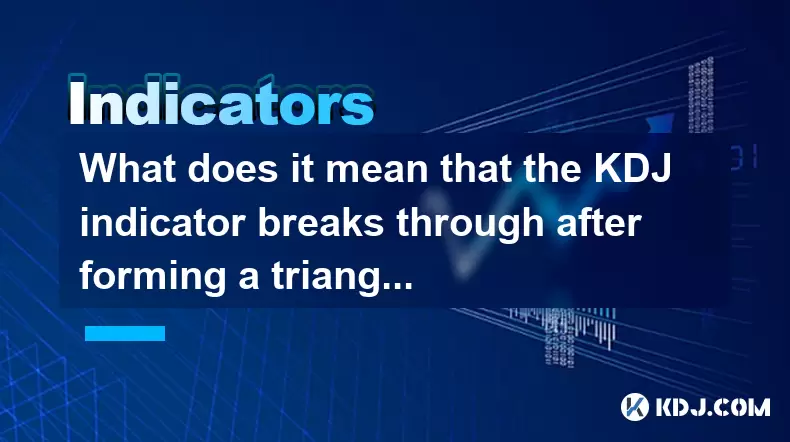-
 Bitcoin
Bitcoin $118600
0.36% -
 Ethereum
Ethereum $3855
1.06% -
 XRP
XRP $3.195
-0.09% -
 Tether USDt
Tether USDt $1.000
-0.04% -
 BNB
BNB $844.5
6.23% -
 Solana
Solana $191.3
2.83% -
 USDC
USDC $0.9997
-0.01% -
 Dogecoin
Dogecoin $0.2376
0.10% -
 TRON
TRON $0.3242
0.83% -
 Cardano
Cardano $0.8222
0.13% -
 Hyperliquid
Hyperliquid $45.26
6.53% -
 Sui
Sui $4.200
-2.56% -
 Stellar
Stellar $0.4336
-1.24% -
 Chainlink
Chainlink $18.86
0.28% -
 Hedera
Hedera $0.2796
-1.75% -
 Bitcoin Cash
Bitcoin Cash $583.3
-1.84% -
 Avalanche
Avalanche $27.06
8.09% -
 Litecoin
Litecoin $112.3
-1.16% -
 Toncoin
Toncoin $3.353
0.58% -
 UNUS SED LEO
UNUS SED LEO $8.968
-0.11% -
 Shiba Inu
Shiba Inu $0.00001395
-0.54% -
 Ethena USDe
Ethena USDe $1.001
-0.03% -
 Uniswap
Uniswap $10.76
0.69% -
 Polkadot
Polkadot $4.175
0.26% -
 Monero
Monero $326.7
1.07% -
 Bitget Token
Bitget Token $4.665
1.61% -
 Dai
Dai $0.9998
-0.02% -
 Pepe
Pepe $0.00001271
0.32% -
 Cronos
Cronos $0.1416
2.01% -
 Aave
Aave $299.3
1.15%
What does it mean that the KDJ indicator breaks through after forming a triangle near the 0 axis?
A KDJ triangle breakout near the 0 axis signals potential bullish reversal, especially when %K crosses above %D with rising volume and %J surges, indicating strengthening momentum.
Jul 28, 2025 at 10:29 pm

Understanding the KDJ Indicator in Cryptocurrency Trading
The KDJ indicator is a momentum oscillator widely used in cryptocurrency technical analysis to assess overbought and oversold conditions. It consists of three lines: the %K line, the %D line, and the %J line. The %K line reflects the current closing price relative to the price range over a specified period, typically 9 periods. The %D line is a moving average of the %K line, usually smoothed over 3 periods, and the %J line represents a triple-exponential average of %K minus %D, making it more sensitive to price movements. When traders refer to the KDJ behavior near the 0 axis, they are analyzing the lower boundary of the indicator’s range, which is typically bounded between 0 and 100. A reading near 0 suggests that the asset may be oversold, signaling potential upward momentum if conditions shift.
Formation of a Triangle Pattern Near the 0 Axis
A triangle pattern in technical analysis indicates consolidation, where price action narrows over time, forming converging trendlines. When this pattern forms near the 0 axis in the KDJ indicator, it suggests that the %K, %D, and %J lines are compressing into a tight range close to the bottom of the oscillator. This compression reflects decreasing momentum and indecision in the market. The triangle can be symmetrical, ascending, or descending, but in the context of the KDJ, a symmetrical triangle near 0 is most significant. During this phase, the %K and %D lines move closer together, and the %J line often oscillates within the narrowing range. This consolidation often precedes a breakout, especially when volume or external market catalysts begin to influence price action.
Breakout from the Triangle Near the 0 Axis
A breakout occurs when one of the KDJ lines—typically the %K or %J—moves decisively outside the upper boundary of the triangle pattern. When this happens near the 0 axis, it is interpreted as a potential reversal signal from oversold conditions. A bullish breakout is confirmed when the %K line crosses above the %D line within the context of the expanding range post-triangle. This crossover, combined with the breakout, suggests renewed buying pressure. Traders monitor whether the %J line surges above 0 and begins climbing into positive territory, which reinforces the strength of the breakout. The speed and angle of the breakout also matter; a sharp upward spike indicates strong momentum, while a gradual rise may suggest a weaker trend.
Interpreting the Breakout in Cryptocurrency Markets
In cryptocurrency trading, volatility amplifies the significance of KDJ signals. A breakout from a triangle near the 0 axis can signal the start of a new uptrend, especially if it coincides with increasing trading volume on the asset’s price chart. For instance, if Bitcoin’s KDJ forms a triangle near 0 on the 4-hour chart and the %K line breaks upward, crossing %D with volume expansion, it may indicate accumulation by large holders. Altcoins often mirror such signals with even greater sensitivity due to lower liquidity. Traders should also cross-verify with price action patterns such as bullish engulfing candles or higher lows forming on the candlestick chart. The alignment of KDJ breakout with support level holds increases the reliability of the signal.
Practical Steps to Confirm and Trade the Breakout
To effectively act on a KDJ triangle breakout near the 0 axis, traders should follow a structured approach:
- Identify the triangle formation by drawing trendlines connecting the highs and lows of the %K, %D, and %J lines over at least 5–7 periods.
- Wait for a confirmed breakout where the %K line closes above the upper trendline of the triangle and crosses above the %D line.
- Check volume on the price chart to ensure it increases during the breakout period, validating the move.
- Set entry points slightly above the breakout level to avoid false signals, using a stop-loss just below the triangle’s lowest point.
- Monitor the %J line to ensure it follows the breakout and does not reverse back into the triangle zone prematurely.
- Use additional indicators such as RSI or MACD to confirm momentum alignment, reducing the risk of whipsaw.
Failure to follow these steps may result in entering trades based on false breakouts, which are common in low-volume or sideways cryptocurrency markets.
Common Misinterpretations and Risk Factors
Traders often mistake a minor upward wiggle in the KDJ for a valid breakout. A true breakout requires both pattern violation and confirmation via crossover. A common error is acting on a %J line spike that quickly retreats into the triangle. Another risk is ignoring the broader market context—during a strong bear market, even a valid KDJ breakout may fail due to overwhelming selling pressure. Also, different timeframes yield different signals; a breakout on a 15-minute chart may be insignificant compared to a daily chart. Always assess the higher timeframe trend before trading lower timeframe KDJ signals. Lastly, exchanges with low data integrity may display distorted KDJ values, so using reputable platforms like Binance or Bybit is essential.
Frequently Asked Questions
What timeframes are best for observing KDJ triangle breakouts near the 0 axis?
The 1-hour and 4-hour charts are optimal for balancing signal reliability and trading frequency. Shorter timeframes like 5-minute charts generate too many false signals, while weekly charts may miss timely entries. Day traders often use the 1-hour chart, whereas swing traders prefer the 4-hour or daily.
Can the KDJ indicator give false breakouts near the 0 axis?
Yes, false breakouts are common, especially in low-volume altcoins or during low-liquidity periods. A breakout is invalidated if the %K line re-enters the triangle within 1–2 periods or if price fails to follow with a bullish candle. Using volume filters and waiting for candle closure improves accuracy.
How does the %J line behave during a valid breakout?
During a valid breakout, the %J line should rise sharply, often exceeding 20 or even 30, indicating strong momentum. If the %J line stalls near 0 or turns down after the breakout, it suggests weak follow-through and a potential reversal.
Should traders use KDJ breakouts alone for decision-making?
No, relying solely on KDJ is risky. It should be combined with price support/resistance levels, volume analysis, and complementary indicators like MACD or moving averages. Confluence of multiple signals increases the probability of a successful trade.
Disclaimer:info@kdj.com
The information provided is not trading advice. kdj.com does not assume any responsibility for any investments made based on the information provided in this article. Cryptocurrencies are highly volatile and it is highly recommended that you invest with caution after thorough research!
If you believe that the content used on this website infringes your copyright, please contact us immediately (info@kdj.com) and we will delete it promptly.
- Avalanche (AVAX) Price Pump Incoming? Analysts Weigh In
- 2025-07-29 06:50:12
- Presales, Investment, July 2025: What's Hot and What's Not
- 2025-07-29 06:30:12
- PayPal, Bitcoin, and Merchants: A New Era of Commerce?
- 2025-07-29 07:10:13
- RUVI Token's Ripple Rally Potential: Audited AI Crypto Heats Up!
- 2025-07-29 04:50:12
- ADA Price, Cardano, SUI & Remittix: Decoding the Latest Crypto Moves
- 2025-07-29 04:50:12
- Solana, ARK Invest, and Staking: A New Era of Institutional Crypto?
- 2025-07-29 05:30:12
Related knowledge

What does it mean when the EMA combination crosses upward for the first time after sideways trading?
Jul 28,2025 at 03:43pm
Understanding the EMA and Its Role in Technical AnalysisThe Exponential Moving Average (EMA) is a widely used technical indicator in cryptocurrency tr...

What signal does the ROC send when it rises rapidly from a low level and breaks through the zero axis?
Jul 27,2025 at 10:15am
Understanding the Rate of Change (ROC) IndicatorThe Rate of Change (ROC) is a momentum-based oscillator used in technical analysis to measure the perc...

What does it mean when the price breaks through the double bottom neckline and the moving averages are arranged in a bullish pattern?
Jul 28,2025 at 10:57am
Understanding the Double Bottom PatternThe double bottom is a widely recognized reversal chart pattern in technical analysis, particularly within the ...

What signal does the DMA fast line cross the slow line above the zero axis?
Jul 28,2025 at 05:42am
Understanding the DMA Indicator and Its ComponentsThe DMA (Difference of Moving Averages) indicator is a technical analysis tool used in cryptocurrenc...

What does it mean that the rebound is blocked after the moving average is arranged in a short position for the first time?
Jul 26,2025 at 10:51am
Understanding the Short-Term Moving Average ConfigurationWhen traders refer to a 'short position arrangement' in moving averages, they are describing ...

What does it mean that the ZIGZAG low point is raised and the high point breaks through the previous peak?
Jul 28,2025 at 03:28am
Understanding the ZIGZAG Indicator in Cryptocurrency TradingThe ZIGZAG indicator is a technical analysis tool widely used in cryptocurrency trading to...

What does it mean when the EMA combination crosses upward for the first time after sideways trading?
Jul 28,2025 at 03:43pm
Understanding the EMA and Its Role in Technical AnalysisThe Exponential Moving Average (EMA) is a widely used technical indicator in cryptocurrency tr...

What signal does the ROC send when it rises rapidly from a low level and breaks through the zero axis?
Jul 27,2025 at 10:15am
Understanding the Rate of Change (ROC) IndicatorThe Rate of Change (ROC) is a momentum-based oscillator used in technical analysis to measure the perc...

What does it mean when the price breaks through the double bottom neckline and the moving averages are arranged in a bullish pattern?
Jul 28,2025 at 10:57am
Understanding the Double Bottom PatternThe double bottom is a widely recognized reversal chart pattern in technical analysis, particularly within the ...

What signal does the DMA fast line cross the slow line above the zero axis?
Jul 28,2025 at 05:42am
Understanding the DMA Indicator and Its ComponentsThe DMA (Difference of Moving Averages) indicator is a technical analysis tool used in cryptocurrenc...

What does it mean that the rebound is blocked after the moving average is arranged in a short position for the first time?
Jul 26,2025 at 10:51am
Understanding the Short-Term Moving Average ConfigurationWhen traders refer to a 'short position arrangement' in moving averages, they are describing ...

What does it mean that the ZIGZAG low point is raised and the high point breaks through the previous peak?
Jul 28,2025 at 03:28am
Understanding the ZIGZAG Indicator in Cryptocurrency TradingThe ZIGZAG indicator is a technical analysis tool widely used in cryptocurrency trading to...
See all articles

























































































